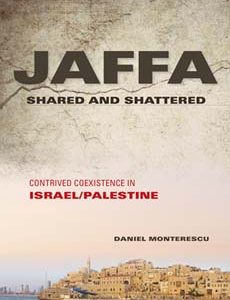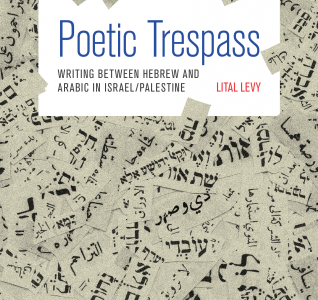-
 Add to cartQuick view
Add to cartQuick view“This Shameful Document”: Early PLO Intellectuals on the Balfour Declaration and the Hussein-McMahon Correspondence
Free!During the years surrounding the 1967 war, the Balfour Declaration was the subject of significant debate and polemics by PLO intellectuals, especially those affiliated with the PLO Research Center in Beirut. Why did the PLO find the Declaration still relevant half a century after it was issued, and what do the particular arguments these PLO intellectuals used to challenge the Declaration tell us about how they understood their predicament in the 1960s and early 1970s? This article addresses these broader questions in four parts. (1) It considers the prominent place of the Balfour Declaration in the PLO’s founding covenant and proposes an explanation for why the critique of the Declaration is linked to the denial of Jewish nationhood. (2) Through an examination of several Research Center publications, it offers a précis of the substantive arguments articulated by PLO intellectuals concerning the Declaration in these critical years and notes the dissonance between two particular lines of argument: rejecting the Balfour Declaration because the British had already promised Palestine to the Hashemites (in the Hussein-McMahon correspondence of 1915–16) and rejecting the Declaration because the British had no right to promise Palestine to anyone. (3) In light of the complex, evolving, and ever-tense relationship between Palestinian nationalists and the Hashemite regime, and considering other contemporaneous writings about the Hashemites by the PLO Research Center director, the article tentatively suggests that these intellectuals may well have been aware of the dissonance between their arguments, and perhaps intentionally unsettled the legitimacy of a regime that, not unlike Israel, was established partly as a consequence of a World War I–era promise. (4) By exploring in closer detail one argument that distinguished the Balfour Declaration from the Hussein-McMahon correspondence, the article considers the place of international law and pan-Arabist thought in the PLO intellectuals’ arguments.
Add to cartQuick view -
 Add to cartQuick view
Add to cartQuick viewDeclarations of (In)Dependence: Tensions within Zionist Statecraft, 1896-1948
Free!This article analyzes the relationship between dependence and independence in four foundational texts in the history of Zionist statecraft: Theodor Herzl’s The Jewish State of 1896, the Balfour Declaration of 1917, the Biltmore Program of 1942, and the Declaration of the Establishment of the State of Israel in 1948. These documents differ greatly in authorship, structure, and audience, but taken together, they illustrate the Zionist project’s convergence with and divergence from anticolonial projects and postcolonial states in the first half of the twentieth century. Both the political program that Herzl sketched out in The Jewish State and Chaim Weizmann’s lobbying during the First World War depended upon the good graces of Europe’s colonial powers. After the war, jubilation among Jews over the Balfour Declaration was accompanied by displays of gratitude, an emotion associated with conditions of dependence. Like anticolonialism in India, Zionism was cautious about demanding outright independence, although the Zionists’ dependence upon Britain was far greater given their status as a minority of Palestine’s population, facing a hostile Arab majority. When the Zionists did demand independence in the Biltmore Program, they also acknowledged their ongoing dependence upon Britain, which they called upon to fulfill its Mandatory responsibilities. In 1948 the Zionists did not separate from Britain so much as Britain separated from Palestine. The Palestine war of that year was a struggle between Israel and Arabs, not between Israel and Britain. Accordingly, the state’s founding declaration was an assertion of creation, not separation, and of sovereignty, not independence from another power. Nonetheless, the document reflected dependence on the international community that had approved Palestine’s partition in November 1947.
Add to cartQuick view -
Add to cartQuick view
Vol. 8, No. 1 (Summer 2018)
Free!Add to cartQuick view -
Add to cartQuick view
Uriel Abulof. The Mortality and Morality of Nations. Cambridge: Cambridge University Press, 2015. 384 pp.
Free!Add to cartQuick view -
Add to cartQuick view
Daniel Monterescu. Jaffa Shared and Shattered: Contrived Coexistence in Israel/Palestine. Bloomington: Indiana University Press, 2015. 384 pp.
Free!Add to cartQuick view -
Add to cartQuick view
Lital Levy. Poetic Trespass: Writing between Hebrew and Arabic in Israel/Palestine Princeton, NJ: Princeton University Press, 2014. 360 pp.
Free!Add to cartQuick view -
Add to cartQuick view
Vol. 7, No. 2 Winter 2017
Free!Add to cartQuick view -
Add to cartQuick view
Names under Supervision: Israeli Linguistic Regulation of Arab Streets – Turʿan as a Case Study
Free!The present article contributes to the local study of street signs, and more generally, of majority and minority language representation. It analyzes the street signs set up by the Turʿan municipality in the North of Israel during the term of the town’s Jewish mayor Yaakov Zohar (2008-2013), shedding light on the impact of top-down political processes on the design of Arab space, its interpretation by a municipality headed by an agent of the establishment, and the namings’ implications for the Arab minority’s spatial socialization. Through the names selected and the visual and orthographic characteristics of the linguistic landscape, the article highlights the politics of shaping cultural and historical identity in physical space. The visual characteristics examined are related to the visibility of the two languages—Arabic and Hebrew—or more specifically, to the representation of one as opposed to the deliberate marginalization of the other. My reading of street signs is informed by critical toponymy and semiotics, which emphasize the ideological meanings inherent in the depth structures of names and visual communication products. I consider the initiative by a Jewish mayor to name the streets of Arab Turʿan an attempt to influence the spatial awareness of its Arab inhabitants in keeping with the values of the establishment.
Add to cartQuick view -
Add to cartQuick view
Individuals in Mobilized Hebrew Society: The Meanings of Setting Limits in the Diaries of the Teacher Z. (1938-1940)
Free!Mobilized society exists when a common goal is shared by masses who contribute with genuine involvement to its achievement. A mobilized Hebrew society existed in Eretz Yisrael before 1948. Many individuals had difficulty conforming to the “emotional regime” imposed by the mobilized society, which tolerated the existence of individual sentiments but not an individual’s particular desires, unless they were in line with its common ethos. The result was reflected in efforts to delineate borders between the emotional regime of the mobilized society and the individuals’ emotional refuges. The craving to preserve the emotional refuge as a complement rather than an alternative to the emotional regime was reflected by moments of personal crisis followed by deep sentiments of guilt. The article illustrates the reflections of such attitudes through the diaries of the teacher Z. during an eighteen-month period (July 1938–January 1940). Z. was a teacher of mathematics in Haifa’s Reali high school. The diaries, which are part of a private collection, are a clear reflection of Z.’s efforts to become a member of an emotional community while creating a separate, individual emotional refuge.
Add to cartQuick view -
Add to cartQuick view
Breaking Boundaries, Bricking Walls: Oriental, Sephardi, and European Jews in a Late Ottoman Palestinian Classroom
Free!This article explores the relations between European Zionists, Sephardim, and Oriental Jews in late Ottoman Palestine by narrating the story of A. Yehudai, a Bulgarian Jewish teacher in the Sephardi community of Gaza in 1913. Reading through Yehudai’s ambitions, deliberations, and frustrations, the article makes two main arguments: First, it challenges the inclusivity often attributed in scholarly literature to the category of “Sephardi,” suggesting that as a practical category used by historical figures, especially in the context of national discourses, it was regarded as much more bounded and rigid. Second, the article points to the period before European Zionist domination over Middle Eastern Jews. Through the case of late Ottoman Gaza, the article shows that Jewish communities in Palestine were essential for institutional Zionist bodies, were aware of their situation, and even used this power structure for their own gain. Taken together, both arguments testify to the fact that communal demarcations are essential for human society in the sense that the crossing of boundaries always entails the delineation of new ones.
Add to cartQuick view
- Home
- About JLS
- Issues
- Vol. 9 No. 1 | Summer 2019
- Vol 8 No 2 Winter 2018
- Vol. 8, No. 1: Summer 2018
- Vol. 7, No. 2: Winter 2017
- Vol. 7, 1: Summer 2017
- Vol. 6, Summer/Winter 2016
- Vol. 5, No. 2 Winter 2015
- Vol. 5, No. 1 Summer 2015
- Vol. 4, No. 2 Winter 2014
- Vol. 4, No. 1 Summer 2014
- Vol. 3, No. 2 Winter 2013
- Vol. 3, No. 1 Summer 2013
- Vol. 2, No. 2 Winter 2012
- Vol. 2, No. 1 Summer 2012
- Vol. 1, No. 2 Winter 2011
- Vol. 1, No. 1 Summer 2011
- Blog
- dock-uments
- Subscribe
- Submit
- Contact






